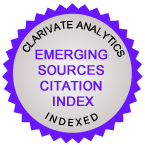Оценка менеджерами влияния экономических санкций на деятельность российских малых и средних компаний
DOI:
https://doi.org/10.21638/spbu18.2023.405Аннотация
Цель исследования: изучить реакцию на санкции против России после первой волны санкционных ограничений, введенных в 2014 г., и ответные контрсанкции в контексте изменений в располагаемых ресурсах и адаптации (вынужденной) стратегических ресурсов, опираясь на ресурсный и институциональный подходы.
Методология исследования: оценены логит-модели по данным 972 малых и средних предприятий, входящих в выборку более 1700 предприятий обрабатывающей промышленности, не являющихся прямой мишенью санкций. Кроссекционные данные опроса 2018 г. используются для изучения восприятия санкционного контекста менеджерами относительно влияния на деятельность их предприятий.
Результаты исследования: санкции снижают ценность комбинаций ресурсов фирмы и заставляют малые и средние предприятия нести затраты на адаптацию. Предприятия, ограниченные в ресурсах, считают обременительным разрабатывать стратегии адаптации путем их перераспределения. При прочих равных технологически продвинутые фирмы чаще отмечают негативные последствия санкционного режима, в то время как молодые фирмы, а также имеющие российских и иностранных партнеров менее чувствительны к нему. Контрсанкции помогают снизить негативный эффект санкций.
Оригинальность и вклад автора: исследование вносит вклад в уточнение понимания эффектов санкционного режима для фирм, не являющихся прямым объектом санкций, дополняя исследования на макроуровне и в отдельных отраслях изучением процессов, происходящих на микроуровне с учетом гетерогенности реакции компаний на внешние шоки.
Ключевые слова:
экономические санкции, малые и средние предприятия, обрабатывающая промышленность, наличие ресурсов, адаптация ресурсов, стратегические ресурсы
Скачивания
Библиографические ссылки
References
Загрузки
Опубликован
Как цитировать
Выпуск
Раздел
Лицензия
Статьи журнала «Российский журнал менеджмента» находятся в открытом доступе и распространяются в соответствии с условиями Лицензионного Договора с Санкт-Петербургским государственным университетом, который бесплатно предоставляет авторам неограниченное распространение и самостоятельное архивирование.





